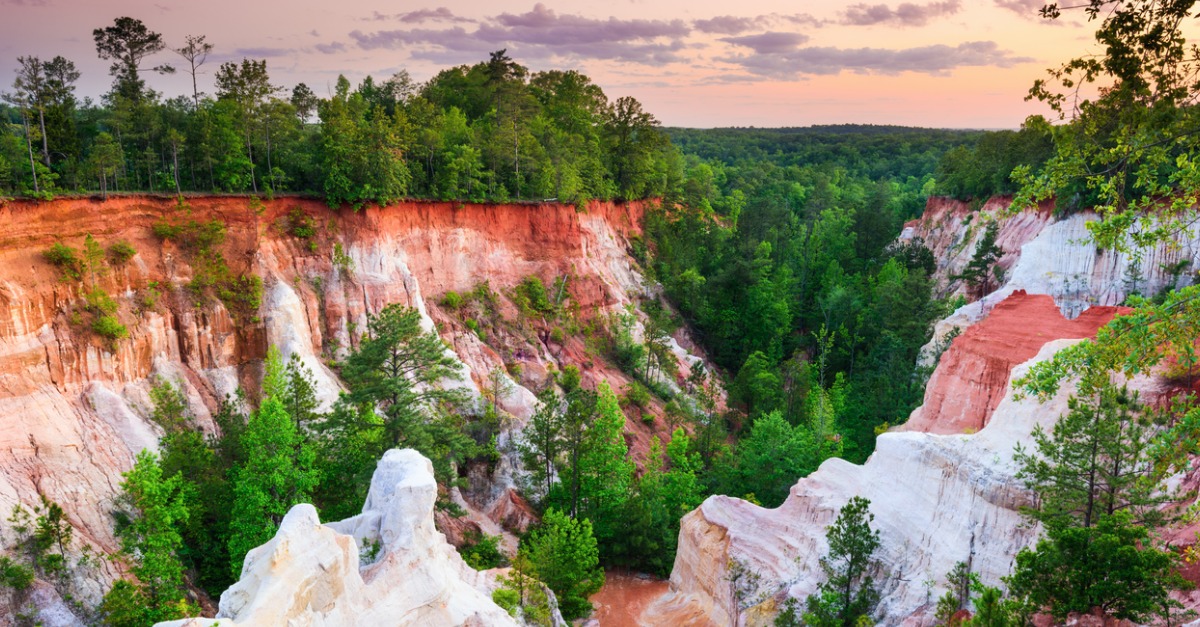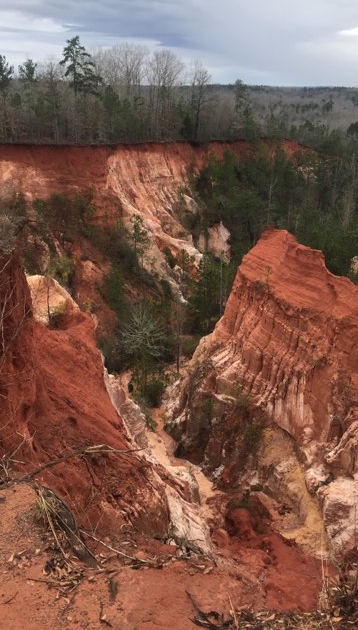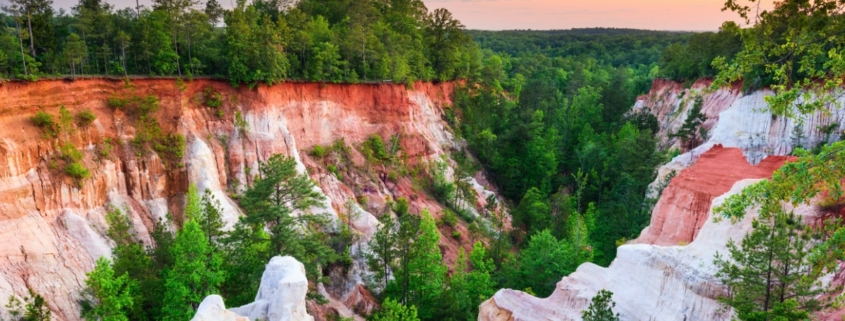Georgia’s Little Grand Canyon: Providence Canyon
 By Misael Romero-Reyes
By Misael Romero-Reyes
You are standing in the middle of a deep deep canyon. It has everything it needs to flourish: water, soil, sunlight, and air. There are wild boars at the water table, huge trees, even alligators! Can you believe this magical wonder would not have been possible without humans making reckless decisions while trying to survive?
A Trip to the 1830s
Let’s go back in time. Imagine yourself in the 1830s and what you see is just open land. Land that is ready to be farmed. There are a few trees, so you decide to cut them, you know, for more land to farm. Neighbors mostly grow cotton to support their families, so you decide to farm cotton too. Over time, you notice that cotton just doesn’t grow the same way it did years before, but you don’t worry too much, maybe the soil just has a short lifespan. You decide to go to another piece of land and cultivate cotton there. You move to a piece of land that is uphill because you have learned over the years that cultivating crops on a slope allows more water to get into the soil.
What was happening to the soil wasn’t normal, and science explains why not. When you are farming (or in this case over-farming), you are removing the topsoil. The topsoil contains the most important nutrients for crops to grow: metals, microbes, and minerals. It also becomes “loose,” so it can be more easily carried away by wind or rain. When these get carried away, the crop won’t get the necessary nutrients and stops producing.

Decades of soil erosion formed Providence Canyon in Lumpkin, GA
Loose Soil Leads to Erosion
As the land becomes “ungrowable,” a second phenomenon occurs. Erosion is the geological process where inner earth materials are worn away by natural forces. In this case, rain and bad farming practices washed away bits and pieces of soil and sand. Little by little over the course of two centuries, the effects of this became visible in the development of a deep canyon appearing on the old farmland. 43 different colors of soil, layers, and layers going into the inner earth. So much soil was taken away that it cannot go any deeper, it ends at the water table.
The rainwater is removing soil at different rates depending on steepness. Remember when you were farming cotton on a steep slope? Well, it led to erosion happening from all sides, and if you look at the deeper and deeper parts of the earth you will see that there is one color in common: red-orange, and this indicates the presence of the metal iron (Fe) because it gets dissolved as water travels through the sediment, then it oxidizes (unites with oxygen), and it’s precipitated at different depths staining the soil in different colors.
The History of Providence Canyon
Now flash forward to today. All of this happened in a small town in Georgia called Lumpkin. The farming was improperly managed during that time, and unfortunately, Providence Canyon formed in a few decades due to the erosion and the overcropping that happened. Thankfully, we are now aware of the damages we were doing to the environment. President Jimmy Carter bought the land in 1970 and established it as a 1,000-acre conservation area. A lot of trees were planted, and this land regained a little bit of its former lush beauty. Trees reduce the amount of storm runoff, which reduces erosion, and they also serve as food and shelter to many organisms. Through conservation, plants and animals began to thrive in Providence Canyon.
One of Georgia’s Natural Wonders
Providence Canyon is one of the “natural” wonders of Georgia. It has much resemblance to the Grand Canyon out west. If you haven’t had a chance to visit, you should! And remember that those red colors and imperfect surfaces happened because of the damage many human practices do to the earth. Despite its beauty, the history of Providence Canyon is also a reminder that if we remove vital elements of earth, we must also take steps to protect it from future damage.




